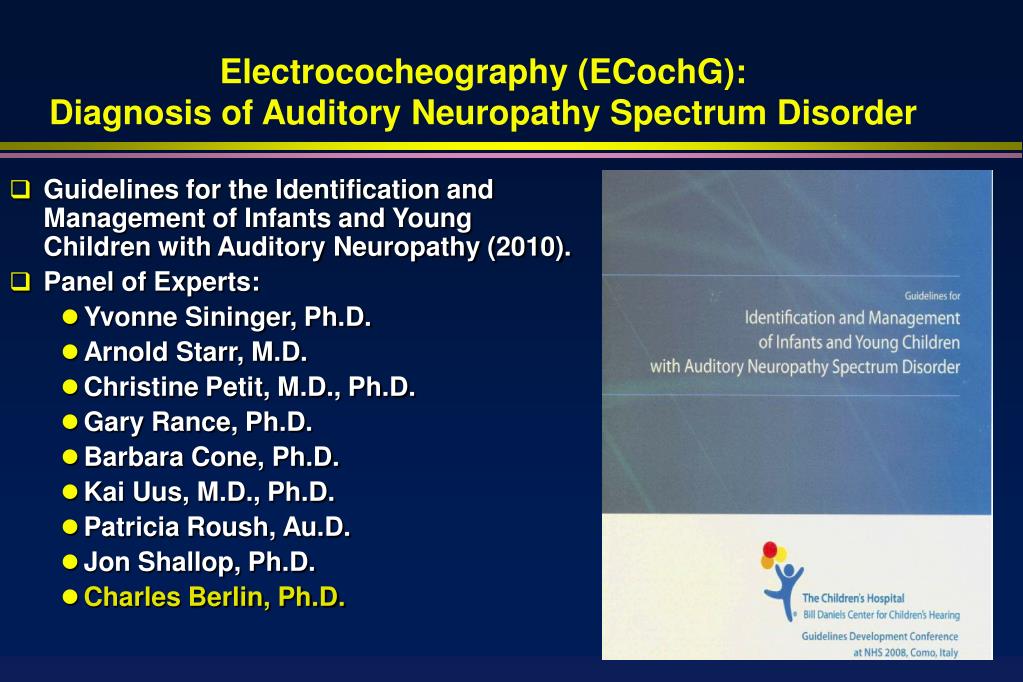

He was well-versed in vestibular studies, but he also did a fair amount of work with ECochG. He is credited for putting together the first electronystagmography (ENG) test battery. If you put it onto the promontory, you can still record these responses without going through the myringotomy process and making a slit in eardrum.Īl Coats was an otolaryngologist at Baylor College of Medicine back from the 1960s through the 1980s. It is barely invasive, and the eardrum heals right away. In the 1960s, people began to realize that recording the ECochG was not that difficult if they used a transtympanic needle, which is a sharp needle placed through the eardrum.

For a child who definitely had a hearing loss, it was well worth it to make an accurate diagnosis of severity. To get an electrode near the ear, they had to perform a myringotomy. Unlike our small computers today, they had heavy racks of equipment that they would roll into the operating room. They used this as an electrophysiologic, objective hearing test. People began to realize that the CM and SP were interesting, but the largest component was a spike recorded in humans, which they called the action potential (AP).īy the late 1950s and early 1960s, audiologist Chuck Berlin and otolaryngologist Bob Ruben from Johns Hopkins said they could do this is in the operating room in children who could not be tested any other way. There was another response, which he labeled the summating potential (SP) (Davis, Fernandez, McAuliffe, 1950). Hallowell Davis, in particular, discovered that there was more to it than just the CM and auditory nerve activity. People all over the world immediately read their work and started to replicate their techniques in humans. Soon after the discovery of the CM in the cat, the work was published in Science, which is the most prestigious journal in the scientific arena. In other words, the cat’s ear was functioning almost like a microphone, hence, the term cochlear microphonic (CM).įigure 1 shows a timeline of the history of the ECochG. The words went from the loudspeaker into the cat’s ear, and through the electrodes sitting on the auditory nerve, they were able to decipher some of what was being said through the loudspeaker. Using an oscilloscope, amplifiers and electrodes, they were able to record activity in the cochlea and from the auditory nerve.Īccording to the story, they presented words from a speaker during the recordings. At Princeton, Wever and Bray (1930a 1930b) recorded auditory activity from an anesthetized cat. As you may know, Hallowell Davis is the father of auditory evoked responses.

He had a great impact on hearing science, including the work done later by Hallowell Davis. HistoryĪ well-known auditory neurophysiologist by the name of Glen Wever discovered the ECochG in 1930. Then we will wrap up with questions and answers. We are only going to spend a moment reviewing the clinical applications of ECochG in adults and focus more of our attention on children, specifically the diagnosis of auditory neuropathy spectrum disorder (ANSD). That that is the most important parameter in all of ECochG test battery parameters. The discussion of the test protocol will emphasize one specific aspect of the protocol: electrodes. You could set up your ABR equipment using different parameters, and we will talk about why you would want to do that. That will lead into a discussion of a clinical test protocol for ECochG. We will quickly review of the generators of ECochG. We will start today with a historical overview of electrocochleography (ECochG). Editor's note: This course is an edited transcript of an AudiologyOnline live webinar.


 0 kommentar(er)
0 kommentar(er)
